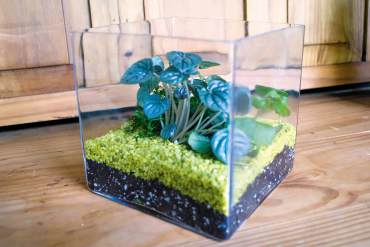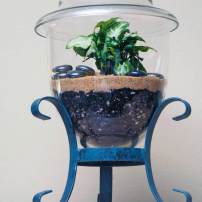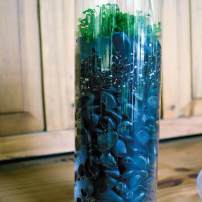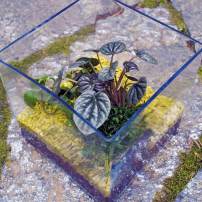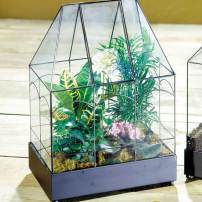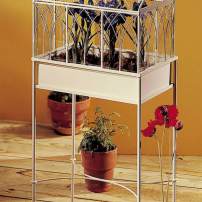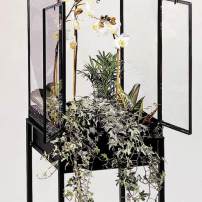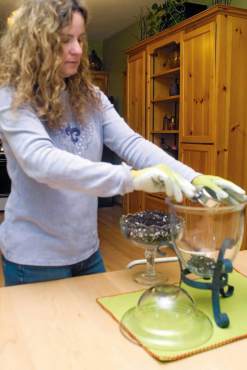
plants a terrarium.
Terrariums are back! Introduced in 1831 for Victorian parlors and popular again in the 1970s, covered glass containers are an attractive way to display plants while providing the humidity that is difficult otherwise to maintain indoors. While a terrarium normally refers to a clear glass container with a lid, a cover is not mandatory.
Containers should be large enough to hold the plant(s) you wish to use without any foliage touching the glass, which can cause rot. You should be able to easily reach inside the opening to plant and tend the contents. The container and lid, if any, should be transparent, clear glass so light penetrates. Other than those practicalities, the shape and style is your choice.
Try thrift and antique stores, any place carrying housewares and well-stocked nurseries that sell houseplants for something appropriate. What do you have at home? Fish tanks, large vases, punch bowls, footed compotes and kitchen storage canisters are possibilities. To cover a lidless container, use a glass plate or cut a sheet of rigid, clear plastic to fit.
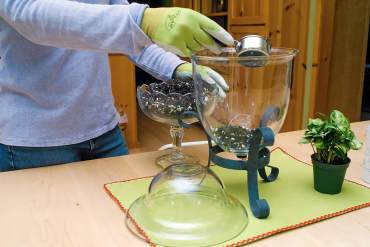
Plants
Use the smallest plants you can find in no larger than a 4-inch pot. Suitable plants are ones that like high humidity such as young Dracaenas, Heart-leaf philodendron, Nephthytis, False Aralia, African violets, Parlor palm, Prayer plant, and the Brake ferns. Avoid plants that like drier conditions like Christmas cactus, Snake Plant, Jade Plant and ZZ Plant.
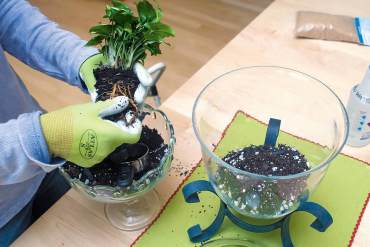
Soil
Blend 4 parts of an indoor potting mix that contains peat and perlite with 1 part charcoal for houseplants.
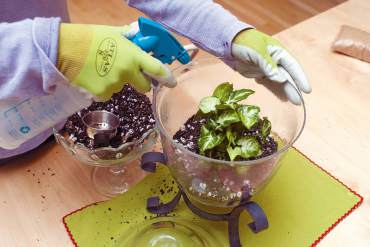
Mulch
The style of your terrarium will depend a lot on how you mulch the soil. For a modern, dramatic look, try polished black pebbles. A layer of neutrally colored, fine sand is soothing in appearance. For some flash, aquarium gravel or glass gems that match nearby décor are ideal.
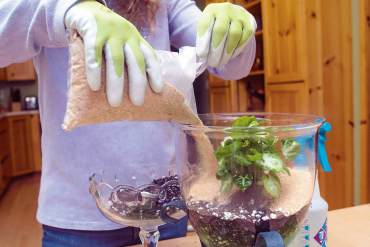
Care
Since there is no drainage and little evaporation with a covered container, avoid overwatering. If you water using a spray bottle, you’ll control the amount of water applied while not disturbing the layers of soil and mulch. Let your container breathe a couple of times a week, more if you see a lot of condensation on the glass or when room temperatures are high. Keep your terrarium away from heat sources. Place the terrarium in a bright location, but remember: no direct sunlight. Think of a magnifying glass in the sun; that is the effect the glass container can have on the plants inside.
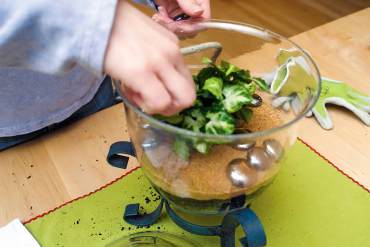
Building Your Terrarium in Steps
Mix your soil and scoop a layer into clean container. How much will depend on the depth of your container.
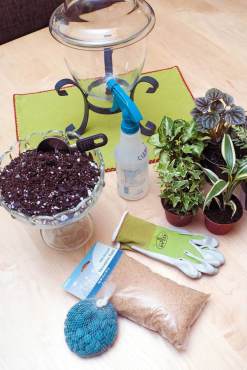 Water your plants well before starting. Remove plants from containers, gently separating their roots. Place plants how you like them on top of the soil, then add more soil to bring the level to just below the top of the rootballs. Tamp well, making sure to fill in between the different plants’ roots with soil.
Water your plants well before starting. Remove plants from containers, gently separating their roots. Place plants how you like them on top of the soil, then add more soil to bring the level to just below the top of the rootballs. Tamp well, making sure to fill in between the different plants’ roots with soil.
Using a clean spray bottle filled with tepid water, mist the soil around the plant well, but don’t make it soggy.
Add decorative mulch evenly on top of soil level, being careful not to bury the plant’s stems, which will cause rot. Tamp down gently if mulch is loose.
Spray down the sides of the container to remove any mulch stuck to it. Mist plants and top of mulch well.
Add small stones, twigs or other ornaments to add interest, if you like.




